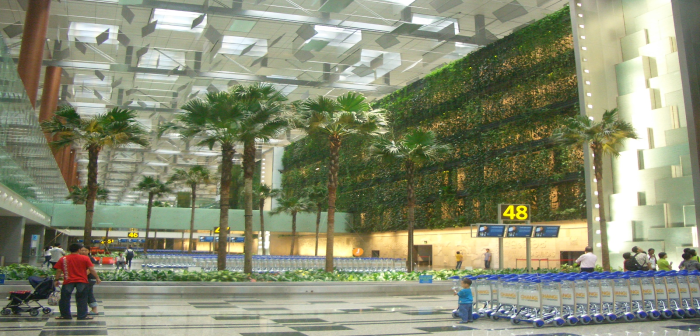Singapore’s Changi Airport has been named the best airport in the world For the fifth year in a row by the Skytrax Passengers Choice Awards, one more in the long list of awards it has received in its 35 years of operations.
Handling about 50 million passengers a year, about the same as New York’s JFK airport, Changi gets almost universal praise unlike its distant US cousin. What could be the reason for its success?
Jochen Wirtz, Professor of Marketing at the National University of Singapore (NUS), says since opening in 1981, Changi has built a reputation as a model of service excellence and a Singapore icon. Writing in the NUS blog, “Think Business”, he draws five business lessons that organisations can learn from Changi’s success:
The first is aligning all that you do to your customer experience. He says Changi may be one of the world’s busiest airports but its operator, Changi Airport Group, has a surprisingly lean staff employing about 1,800 employees, almost a third of whom work in the airport emergency teams. Nonetheless, it recognises that everyone in day-to-day contact with the travelling customer is the key to delivering “the Changi experience”.
The third point is anticipating the customers’ needs. Unlike several modern airports, Changi is not built to be futuristic or stylish, nor as an architectural wonder, but rather to be functional. And this it does exceptionally well.
More than 200 companies with a total workforce of around 28,000 run the airport’s various operations, but the focus is on delivering a single, consistent “Changi Experience” to all customers. Changi’s management label this approach: “Many partners, many missions, One Changi”.
For travellers the experience seems effortless. But behind the scenes is a carefully built structure of strong leadership, role modelling, constant improvement, and staff training and recognition programmes that underpin Changi’s working culture. In any business, service is one of the few ways to differentiate and build competitive advantage, Prof. Witz says.
The second point is designing and redesigning your processes. Changi prides itself on the speed in which it can process arriving travellers, minimising the time between touchdown and seeing the airport in the rear view mirror of their car or taxi.
This smooth operation is the result of a continuous and extremely disciplined approach that Changi takes toward process design and redesign, examining and every stage and how it can be improved. This involves a single minded focus on customer outcomes. In this case, moving passengers easily and effortlessly off the plane, through the airport, reuniting them with their bags, and finally seeing them on their way.
The third point is anticipating the customers’ needs. Unlike several modern airports, Changi is not built to be futuristic or stylish, nor as an architectural wonder, but rather to be functional. And this it does exceptionally well.
Certainly it has its aesthetic features, such as waterfalls and its famous butterfly garden. But all of the airport’s features and facilities are designed to be in the place that delivers the optimum, stress-free customer experience.
One of the best ways of understanding what the customer wants is to ask and observe them. Changi is constantly conducting surveys, gathering data and observing travellers to improve its service offering.
This intelligence is then used to develop a range of metrics and KPIs designed to ensure Changi maintains its position as a premier aviation hub.
The fourth point is the realisation that no detail is too small. “Working with Changi senior management on several projects I have observed a very close attention to detail, with no issue considered too small. This permeates through all levels of the company, with managers sharing photographs, ideas and comments on service aspects that could be improved,” Prof. Witz says.
One example he often points out in his classes is the always gleaming Changi toilets and the customer feedback system built around them.
With touch screen customer satisfaction panels in every toilet, the standard and operation of each bathroom is closely monitored. Using simple icons of happy/sad faces any service issues are immediately flagged for attention to the relevant people and the data gathered is used to motivate staff.
ALSO READ: Admission Process for Working Executives Program (WMP) at IIM Lucknow Begins
The fifth point is there’s no such thing as ‘finished.’ In service culture what is innovative and ground-breaking today can quickly become an expected, standard or commonplace feature tomorrow. That means service providers need to continuously innovate to come up with new ways to add to the customer experience.
Much of Changi’s business and future profitability depends on it being able to maintain and grow its reputation as a preferred transit stop for passengers. Thus, there is a constant drive to experiment with and improve the airport’s appeal to passengers while at the same time containing costs.
That has made Changi not just the most awarded airport in the world, but also a highly successful and model business in its own right, Prof. Wirtz, who is also an international fellow of the Service Research Center at Karlstad University, Sweden, says.(Image Source:Wikipedia.org)




